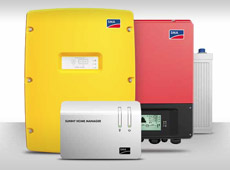Solar Energy Storage is the Future
 The continuing evolvement of the energy industry points towards the storage of renewable energy as being the best investment you can make today. From the first electric light, switched on in the mid-1860s, through the structured designs of the grids (centralised generators fuelled by coal) to the current renewable energy systems, Australia’s energy production facilities have changed and the electricity needs continue to grow.
The continuing evolvement of the energy industry points towards the storage of renewable energy as being the best investment you can make today. From the first electric light, switched on in the mid-1860s, through the structured designs of the grids (centralised generators fuelled by coal) to the current renewable energy systems, Australia’s energy production facilities have changed and the electricity needs continue to grow.
With the focus now on renewable energy, like large-scale wind and residential solar photovoltaics (PV), the days of the coal-fired generators are numbered. It is estimated that the current number of residential household solar PV systems (over 1.8 million) is set to double by the mid-2020s.
Due to this, the next stage of the evolution has begun, energy storage systems. There are four main areas in which the focus of the role of energy storage systems is taking. These are residential battery storage, grid-scale battery storage, community-scale battery storage and system-scale energy storage.
Residential Battery Storage
Solar storage batteries have been available for some time but the choice was either the battery or the grid, not both. Then the technology caught up and in 2015, interest in this type of setup began. Having the battery alongside the collection of solar PV allows for use of the generated PV during the day with excess saved to the battery for use after dark. The grid is only accessed once the battery is drained.
The main reason for customers choosing the solar battery storage option is the continuing rise in the cost of electricity.
Did you know that electricity costs
have risen 63% over the last ten years?
Another reason is the interest in helping to reduce the CO2 emissions that contribute to climate change. A third consideration is the lower possibility of being caught in a power outage. The large-scale blackout of 2016 in South Australia has had many residents and business owners seeking alternatives, to prevent similar occurrences from happening again.
Interest in the systems is improving and some predictions suggest that as many as 1 million systems will be installed by 2020. This progression may be slowed by the economics of the residential battery storage systems, complications of installations and commissioning the new storage systems.
Grid-Scale Battery Storage
One of the things that came out of the South Australian blackout mentioned above, was the installation of the 100 MW/129 MWh Tesla big battery. Known as the Hornsdale Power Reserve, it is the largest lithium-based battery system currently installed in the world. It was seen as a necessity to provide some sort of back-up power supply in the event of another widespread power outage.
Other parts of Australia and the world have taken on the same sort of setup for similar reasons and to also help with the climate change reduction in CO2 emissions. By adding a battery storage system to the wind and solar farms around Australia, grid-scale battery storage is increasing and improving.
Community-Scale Battery Storage
The idea for Community-Scale Battery Storage is being considered and installed in mainly rural and urban centres. The storage capacity can supply up to 150 dwellings but only limited installations have been installed to date.
There are issues with the regulations involved and the logistics in such a setup and changes need to be made before this concept gets widespread acceptance.
System-Scale Energy Storage
We already have a System-Scale Energy Storage system that has been up and running for decades, pumped hydropower in the Snowy Hydro Scheme. Interest in this area has been reinvigorated with the Snowy 2.0 project with a massive increase of energy storage capacity expected to be added and online in 2024.
Now Is The Time!
With all the battery and energy storage capabilities mentioned above, you can see that the future of the Australian electricity market will include several of them, at all the levels mentioned. So the question you need to ask yourself is not if you should get a Solar Energy Battery Storage system, but when.
Dr Lachlan Blackhall recently published an article in ECD Online, a solar industry magazine, in which he covers what we’ve talked, however in more detail and at the end, he suggests “now is the time to take advantage of this opportunity.”
You can read more of the article here











